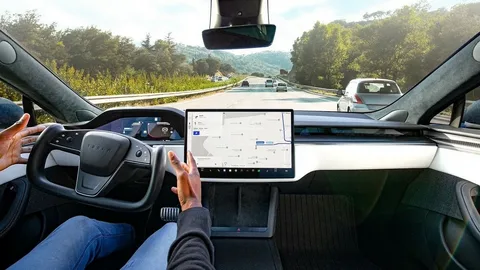Elon Musk’s Vision for Tesla Self-Driving Technology
Summary
- Tesla’s self-driving technology focuses on safety, efficiency, and accessibility.
- Musk aims for Level 5 autonomy, eliminating the need for human intervention.
- Key advancements include FSD beta expansion and a vision-based system without LiDAR or radar.
- Challenges include regulatory barriers, edge-case scenarios, and public trust.
- Tesla leverages real-world data from millions of vehicles to continuously refine its AI systems.
- Musk envisions robotaxis, enhanced safety metrics, and global scalability as part of Tesla’s self-driving future.
Introduction
Elon Musk has consistently pushed the boundaries of innovation, and Tesla’s self-driving technology is no exception. From autonomous navigation systems to advanced machine learning models, Musk’s vision revolves around making roads safer, reducing human error, and paving the way for a fully autonomous future. Leveraging his platforms like X (formerly Twitter), Musk regularly shares updates and insights on Tesla’s progress in self-driving technology.
Tesla’s Self-Driving Milestones
Tesla’s self-driving technology has come a long way since its inception. The company’s Autopilot and Full Self-Driving (FSD) systems aim to provide comprehensive autonomy with enhanced safety. Recent milestones include:
- Full Self-Driving Beta Expansion: Tesla has extended its FSD beta to a larger audience, refining its algorithms through real-world user data.
- Neural Networks in Action: Tesla’s AI-powered neural networks handle complex scenarios, including navigating urban traffic and recognising diverse road conditions.
- Vision-Based Approach: Unlike competitors, Tesla relies solely on cameras and neural nets, moving away from LiDAR and radar technology for cost-efficiency and scalability.
Elon Musk’s Vision for Self-Driving Technology
Musk envisions a future where Tesla vehicles achieve Level 5 autonomy, allowing them to operate entirely without human intervention. In a recent post on X, Musk highlighted,
“Self-driving technology is not about creating perfect systems; it’s about making driving at least ten times safer than human operation.”
Key goals of Tesla’s self-driving technology include:
- Safety Enhancement: Reducing accidents caused by human errors such as distraction or impairment.
- Traffic Efficiency: Minimising congestion through optimised navigation algorithms.
- Universal Accessibility: Making transportation easier for individuals unable to drive, such as the elderly or disabled.
Challenges on the Road to Full Autonomy
Achieving Level 5 autonomy is a herculean task. Tesla’s approach has faced challenges, including:
- Regulatory Hurdles: Governments worldwide are hesitant to approve fully autonomous systems due to safety concerns.
- Edge Cases: Rare and unpredictable scenarios continue to test the limits of Tesla’s neural networks.
- Public Perception: Convincing users to trust self-driving technology remains a significant barrier to adoption.
Musk recently acknowledged in an interview:
“The road to full autonomy isn’t just about technology. It’s about building trust, ensuring safety, and navigating regulatory complexities.”
Leveraging Real-World Data
Tesla’s edge lies in its ability to gather data from millions of vehicles on the road. This data fuels continuous improvements to its AI systems. Musk stated on X:
“Tesla’s real-world AI is trained on more data than any other self-driving system, making it smarter and safer every day.”
This vast dataset allows Tesla to:
- Refine AI Algorithms: Identify patterns and improve decision-making in diverse driving scenarios.
- Simulate Edge Cases: Test rare situations in virtual environments for better preparedness.
- Deploy Rapid Updates: Send over-the-air updates to improve system performance regularly.
The Road Ahead
Musk’s optimism about Tesla’s self-driving future remains unwavering. He predicts significant progress within the next few years, stating:
“We’re closer than ever to a world where your car truly drives you.”
Upcoming advancements include:
- Autonomous Ride-Sharing: Tesla plans to launch a fleet of robotaxis, offering affordable and sustainable transportation.
- Enhanced Safety Metrics: Continuous improvements aim to make Tesla’s system significantly safer than human drivers.
- Global Expansion: Scaling the technology to international markets while adhering to local regulations.
Conclusion
Elon Musk’s relentless pursuit of innovation positions Tesla as a leader in self-driving technology. With a vision rooted in safety, efficiency, and accessibility, Tesla continues to shape the future of transportation. As Musk frequently reminds us through his posts on X,
“The future of self-driving is about unlocking possibilities we once thought impossible.”
Tesla’s journey may be challenging, but the promise of autonomous vehicles transforming society keeps Musk and his team charging ahead.



Post Comment